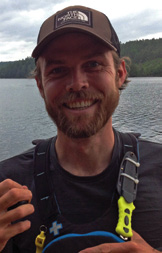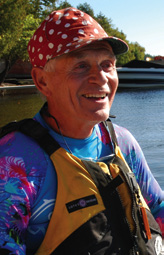Whether you’re on a lengthy expedition or a day trip, paddling efficiently is always the goal. The less energy you expend on strokes, the more energy you have to go farther, go longer or indulge in post-canoe activities, like photography, guitar plucking and baking a killer loaf of molasses bread in the Dutch oven. Four experts offer advice so you can paddle a long way all day, then be ready to serenade the campfire all night.
 Get Ready
Get Ready
HEATHER HERBECK
Paddle Coach and Owner at Fitness & Sport Evolution
Whether you are in your boat six out of seven days, or you paddle every couple of weeks, everyone can fall victim to tight muscles and a stiff back. Before I get on the river, I do a quick minute or two of an activity that gets my heart rate up and my blood flowing, like jumping jacks, high knees or a jog back and forth in the parking lot. This loosens muscles and protects them long term. Follow with some arm circles to warm up the shoulders, leg swings to loosen up the hips and torso rotations to get the core ready for powerful paddling.

Get Rotating
Rob Holden
Canoe Instructor
Rotation, rotation, rotation. You hear instructors say it all the time. The power from the forward stroke comes from the rotation of the torso, not from flexing the arms. If you finish the day with your abdominal muscles more tired than your arms, you’re doing it right. The trick is to keep that shaft vertical. By keeping the path of the paddle blade close to the side of the boat, forward power is maximized and spin minimized. To be sure you’re doing it correctly, watch your T-grip; your grip hand should be over the water, not over your boat. It’s so simple, but this error is the most common I see on the water.

Get Speedy
Bob Vincent
Marathon Canoeist and Coach
You can lift weights, run, bike or swim, but that will not make you go faster in a canoe. The stroke is the answer to speed, and many people who have paddled for a long time just slough it off. We as coaches say the words: vertical paddle, side to side, front to back. No cavitation; bury your paddle at the start of your stroke. Extend your back at the start of the stroke. Do not let your elbow pull past your back. When you want to go faster, push down harder and lock your arms. If your arms flex, you are deflecting your power.

 Get Eating (No, Really)
Get Eating (No, Really)
Al Pace
Guide and Owner at Canoe North Adventures
I’m not sure if we paddle to eat or eat to paddle. Food is an essential part of every successful expedition. Canoe tripping is the only time in my life when I have three meals a day, plus morning GORP, afternoon GORP, appetizers before dinner and dessert after dinner. If you’re making miles, you need to fuel your body at least every couple hours. (Just 30 minutes of paddling at a quick speed of four miles an hour will burn almost 400 calories for the average male—Eds.) Beware of eating too much in one sitting, especially before a major crossing or portage. And as important as food is hydration. Even on cool days everyone should drink at least two liters during the day.

This article first appeared in the Fall 2015 issue of Canoeroots Magazine.
Subscribe to Paddling Magazine and get 25 years of digital magazine archives including our legacy titles: Rapid, Adventure Kayak and Canoeroots.








